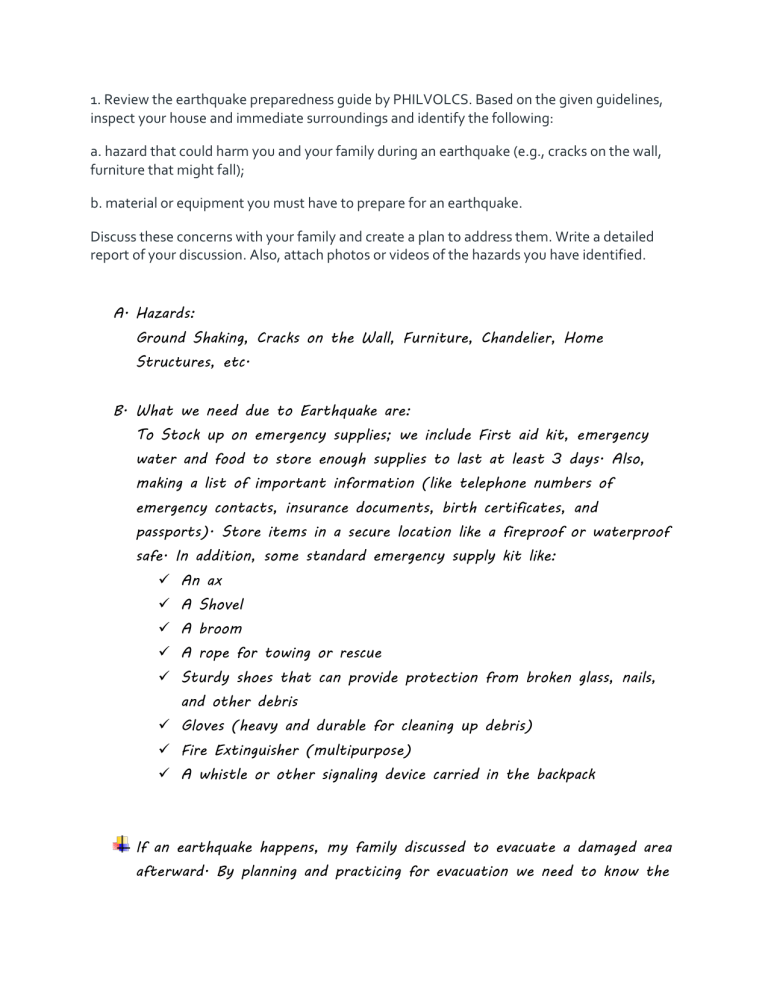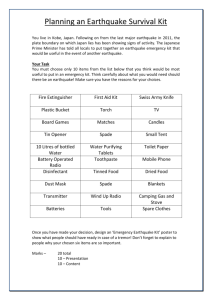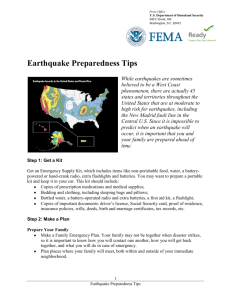
1. Review the earthquake preparedness guide by PHILVOLCS. Based on the given guidelines, inspect your house and immediate surroundings and identify the following: a. hazard that could harm you and your family during an earthquake (e.g., cracks on the wall, furniture that might fall); b. material or equipment you must have to prepare for an earthquake. Discuss these concerns with your family and create a plan to address them. Write a detailed report of your discussion. Also, attach photos or videos of the hazards you have identified. A. Hazards: Ground Shaking, Cracks on the Wall, Furniture, Chandelier, Home Structures, etc. B. What we need due to Earthquake are: To Stock up on emergency supplies; we include First aid kit, emergency water and food to store enough supplies to last at least 3 days. Also, making a list of important information (like telephone numbers of emergency contacts, insurance documents, birth certificates, and passports). Store items in a secure location like a fireproof or waterproof safe. In addition, some standard emergency supply kit like: An ax A Shovel A broom A rope for towing or rescue Sturdy shoes that can provide protection from broken glass, nails, and other debris Gloves (heavy and durable for cleaning up debris) Fire Extinguisher (multipurpose) A whistle or other signaling device carried in the backpack If an earthquake happens, my family discussed to evacuate a damaged area afterward. By planning and practicing for evacuation we need to know the basics; like Drop, Cover, and Hold during earthquake drill. We discussed a home evacuation plan, to sketch a floor plan in the house, discuss evacuation details, plan a second way to exit from each room or area, if possible to need special equipment such as rope ladder, etc. We mark where all emergency supply kit is (including food, water, first aid) and fire extinguisher are located. Also, locate where the utility switches are located so they can be turned off, if possible. Then, we indicate the location of my family’s emergency outdoor meeting place. To keep items from falling off open shelves, we attached a wooden or metal guardrail to each shelf. Also making sure to place heavy or large objects on lower shelves. It is important to learn the safe spots in each room of the house. Like underneath a sturdy table away from walls or underneath the covers with a pillow over the head if you are already in bed. We make sure everyone in the family understand the school’s emergency procedures for disasters and be serious about it. Because this will help us coordinate where, when, and how to reunite with the family after an earthquake without getting hurt.








